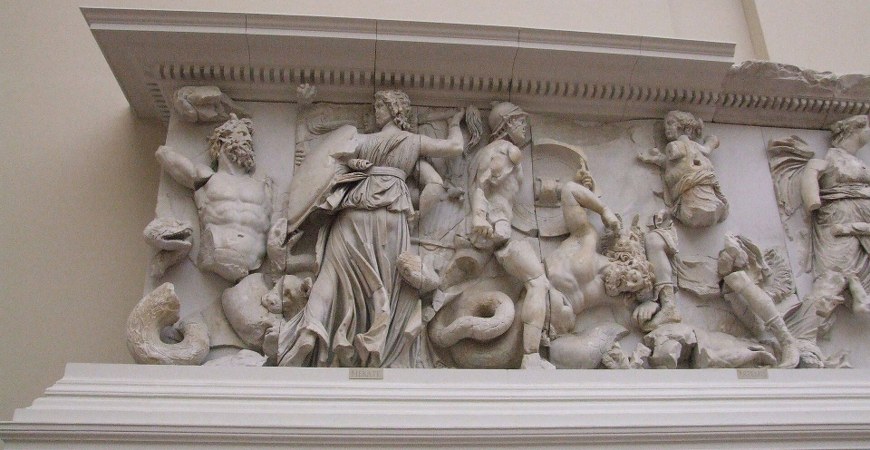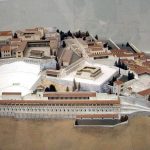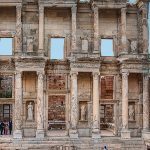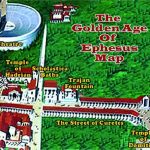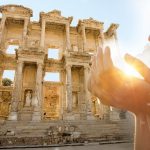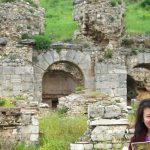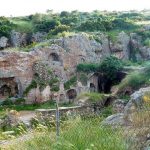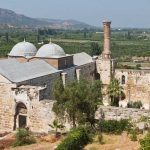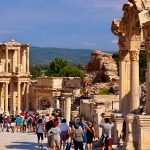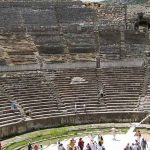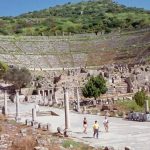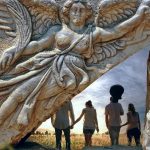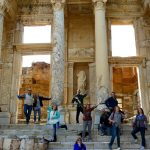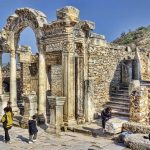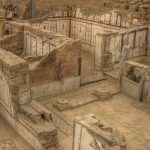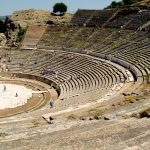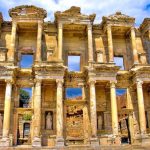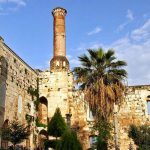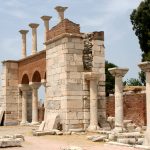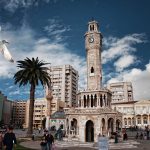Pergamon Museum,
Pergamon Museum was first established in 1924 as a depot in the Bergama Acropolis. Then it moved to a new building where it was opened to the public in 1936. The museum consists of an inner courtyard surrounded by two penthouses and two rooms. In the penthouse to the left of the entrance are examples of architecture from the Hellenistic, Roman, and Byzantine periods (capitals, console stones, bas-reliefs, cornices, friezes etc.), statues of men and woman and a model of the Pergamon Zeus Sacrificial Altar. The first penthouse leads to the hall and from here to the room on the left. In this are Hellenistic marble statues from the Bergama Acropolis, building stones, basreliefs, clay statues, pottery, glass, lamps, money and other small objects. In the hall of the museum are statues and small findings brought from the Pergamum Acropolis and Aesclepion. In the second room to the right of the hall are statues and busts from the Acropolis and Aesclepion, and a mosaic found in Bergama on the floor. In the cases of the second room are displayed bronze and ivory objects and marble statuettes from the Roman period and coins from the Byzantine and Ottoman periods.
The Second Penthouse to the right of the entrance contains inscriptions, bas-reliefs, marble statues, honor tablets, offering stones and grave styles, dating from the V century BC to the III century AD. In the courtyard of the museum are victory statues and a sun dial. There is also an Ethnographic Museum in Bergama, containing costumes, jewelry, napkins, waistbands, clothes, purses, socks etc. made by hand. Examples of weaving from Bergama and various ethnographic articles.
Also, you can join Pergamon and Acropolis Ancient City day tours from Izmir, Selcuk, Cesme, Kusadasi, Sirince Village, Canakkale, and Istanbul. Pergamon tours are done with regular group tours and private tours.

